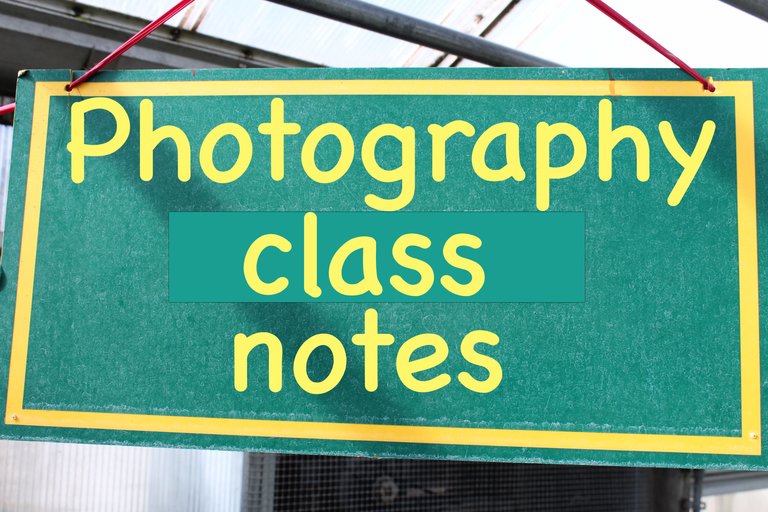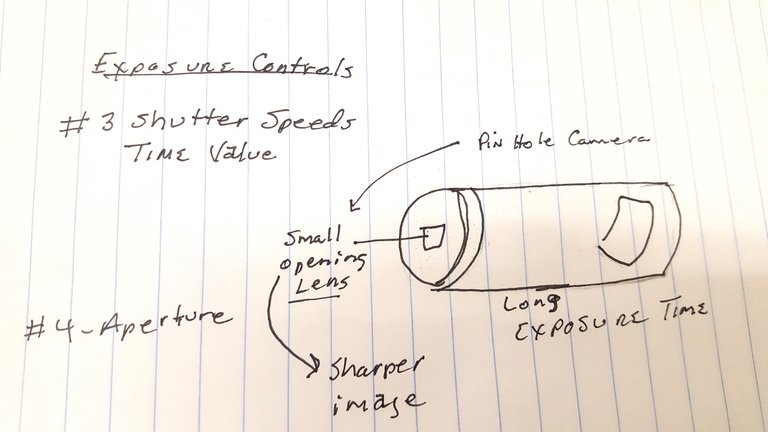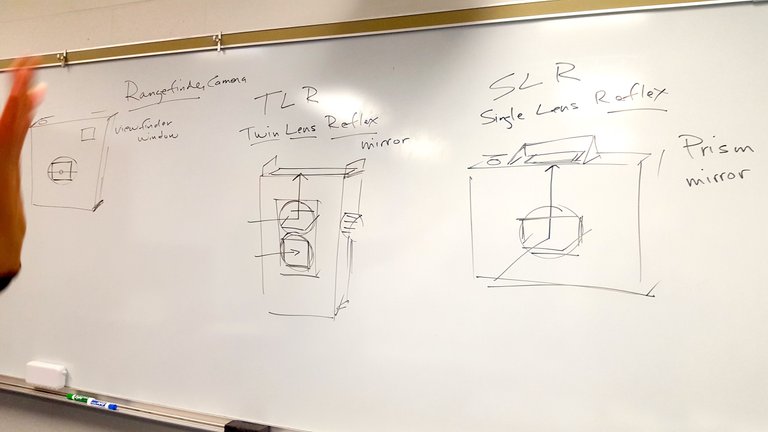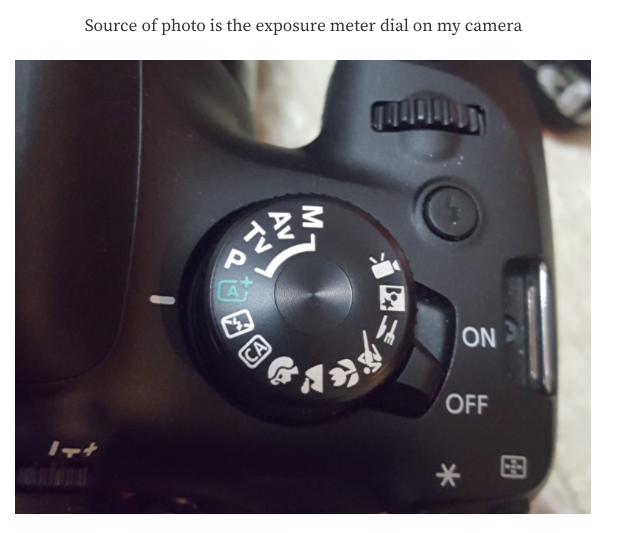
source my photo and editing
I am presenting some of the notes taken in photography classes. The instructor has her master’s degree in fine art photography with many years experience as a photographer.
To quote my instructor: “The principles of photography are the principles of photography no matter which camera you use.”
This is theory right now.
The Big 4
- Existing light – Brightness of the reflectivity to the light.
- ISO – The sensitivity to the light; film speed (response time in film 200 – 400 – 800 – 1600)
Set to lowest / slow fine grain
Digital sensors adapted the same thing; low numbers give the highest quality.
Low = slow
Fast = gives grainy look due to electronic noise
You have 2 exposure controls
- Shutter and shutter speeds – the time value/exposure time
- Aperture (lens opening) “F-stop”
Types we talked about earlier
- Camera obscura – a darkened room
- Pinhole camera
- Range Finder

Source is my notes with my phone...best I could do
The phone is a live feed to take the photo. (she is referring to the viewfinder here.)
When using an SLR you need a class 10 processing speed. (she is referring to the digital chip in camera)
SLR – single lens reflex
TLR – Twin lens reflex

source quick photo in the classroom with my galaxy 6 phone
SLR (single lens reflex)
SLR means one lens, 45-degree angle lens – image comes in upside down and laterally reversed. The mirror moves out to the way for you to take the photograph.
When using a really slow shutter speed it will look black through the viewfinder; it is okay.
Only 2 controls for exposure
Shutter is inside the camera body
Aperture is inside the lens
Introduction to Shutter Speeds
Shutter speeds are Time value
Opens designated amount of time determining the amount of light. This is determined by the amount of time.

Source of photo my earlier post
The shutter speed is set in fractions of a second.
Standard sequence of shutter speeds on the camera
Older cameras has shutter speeds on dial on top of the camera.
1 ½ ¼ 1/8 1/15 1/30 1/60 1/125 1/250 (Expressed 1/250th) 1/500
1000 2000 4000 (1/60 is a faster shutter speed)
30” (30 full seconds) 15” 8” 4” 2”
1 is a full second with light coming through the lens and exposing the shutter speed 1 full second.
2 = ½ second
1/30 Slower doubles the light x2
1/60 Faster cutes the light in half
Getting correct exposure information is important. The language of the light meter is exposure and it is all about halving and doubling the light to the receiver of light.
Halving is cutting in half
Doubling is the amount of time doubled
Shutter speed is TV (time value)
“The Secret of the Photography Universe”
ISO is sensitivity to light halving and doubling.
Shutter Speeds
THE FULL STOP SEQUENCE of Shutter Speeds
30” 15” 8” … 1 1/2 ¼ 1/8
A STOP is an increment of light halved and doubled.
So shutter speeds are stops too.
This is the language of exposure.
1/30 to 1/60 (I’ve increased stop x2) + stop
1/60 to 1/25 (I’ve decreased = faster by 1 stop so -1/2) -1 stop
When you look you will see the dots between the numbers. This is the third stop increments. 1/15.. 1/30..
Fast = stop movement
Slow = Movement Blur
The math of exposure
Exposure is the light meter’s job
Chose the shutter speed to get your desired effect.
200 ISO is twice as sensitive as 100
Increased stop
principles of photography
1st in the series: https://steemit.com/photography/@rebeccabe/principles-of-photography-photography-class
2nd in the series: https://steemit.com/photographyclass/@rebeccabe/principles-of-photography-a-continuing-series
I already know most of this but I like the way you explain it. Thanks for the refresh ;)
And followed!
thanks
This post has received a 1.46 % upvote from @buildawhale thanks to: @rebeccabe. Send at least 1 SBD to @buildawhale with a post link in the memo field for a portion of the next vote.
Steem WitnessTo support our daily curation initiative, please vote on my owner, @themarkymark, as a
If this continues, I will become a professional photographer thanks to your lessons. Thank you.
everything helps .. thanks you for a great comment :)
nice post and useful, thanks:)
thank you I hope it helps
nice your post,thanks
thank you
Good 1
thank you